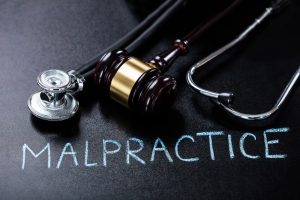One of the driving forces behind tort reform in malpractice, both in Maryland and around the nation, is that these claims are usually frivolous and result in undeserved compensation for patients and their medical malpractice lawyers.
This month, the New England Journal of Medicine addressed this issue in a study of 1,500 randomly selected malpractice cases. The neat thing about the study is that impartial doctors reviewed the experts’ opinions in the pending cases and then assessed whether each patient was injured and, if so, whether medical malpractice caused the patient’s injury. They allowed the independent experts to act as judge and jury.
(2019 Update: This Johns Hopkins tells us that malpractice is the third leading cause of death in the country.)
Doctors Seem Quicker to Find Malpractice Than Jurors
 You might expect the impartial reviews of doctors to be biased toward findings of no medical negligence. You are probably right. But even so, the study found that 63% of the injuries resulted from medical malpractice. Jurors are easier on doctors than a panel of doctors would be. The caveat — and it is big — is that those same doctors would not find liability in 63% of the cases if they were serving on a jury. That is a very different context.
You might expect the impartial reviews of doctors to be biased toward findings of no medical negligence. You are probably right. But even so, the study found that 63% of the injuries resulted from medical malpractice. Jurors are easier on doctors than a panel of doctors would be. The caveat — and it is big — is that those same doctors would not find liability in 63% of the cases if they were serving on a jury. That is a very different context.
The study found the system usually works. Of valid medical malpractice claims, most received compensation. In contrast, where the impartial doctors found no medical malpractice, those patients rarely recovered. The study further found that healthy people successfully suing physicians for medical malpractice is uncommon and is far outnumbered by instances where medical malpractice goes unreported.
Evidence of Need for Malpractice Reform Lacking
This is another blow to the claim that we need medical malpractice reform in Maryland. After claiming a crisis of unprecedented proportions last year Medical Mutual, Maryland’s largest medical malpractice insurance carrier, announced that medical malpractice insurance rates would not rise in 2006, presumably because claims fell from $93 million in 2003 to $78.5 million in 2004.
I think most Maryland doctors have realized this and have focused their energies towards reform of their negotiating rights with health insurance companies as to the rates of compensation for medical services. Time Magazine wrote an interesting cover story on this last week.
- Settlement value medical malpractice claims
- Medical malpractice insurance in Maryland
- Malpractice claims are falling in 2019
Other Interesting Findings in This Malpractice Study
- Most malpractice claims result from medical malpractice. This is a dagger to the heart of the notion that medical malpractice lawyers manufacture most malpractice cases. In 63% of the cases where impartial doctors found an injury, either the courts or juries found it to result from medical malpractice. Perhaps even more significant in this battle for tort reform in Maryland and elsewhere, few of the claims where they found no medical malpractice were frivolous. The authors wrote that the claims where the impartial doctors found no medical malpractice did not square with the notion of opportunistic personal injury lawyers pursuing lawsuits that lacked merit. Rather, the authors stated their findings underscored “how difficult it may be for plaintiffs and their attorneys to discern what has happened before the initiation of a claim and the acquisition of knowledge that comes from the investigations, consultation with experts, and sharing of information that litigation triggers.” While they may have found no medical negligence, they can see how the personal injury lawyers and their victims thought there was negligence before they had conducted discovery.
- 85% of medical malpractice cases reviewed resulted in a settlement before trial.
- In 8% of medical malpractice cases that went to trial, the defendant doctors prevailed.
 Maryland Injury Law Center
Maryland Injury Law Center

